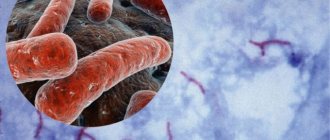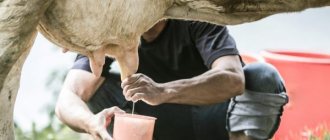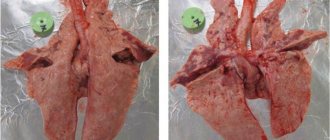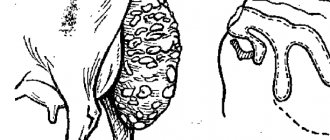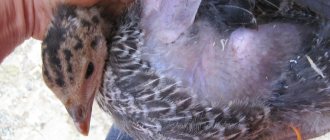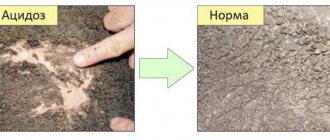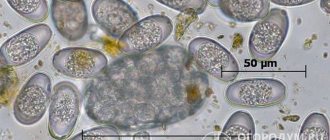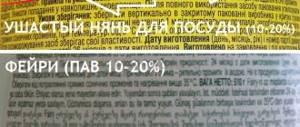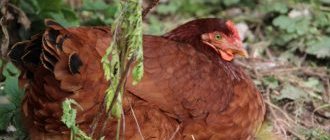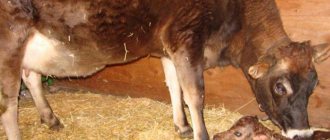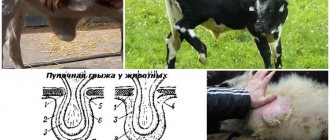What is mastitis in a cow?
One of the most common diseases in dairy farming is mastitis. Appears against the background of some complications after childbirth, which are supplemented by problematic care and feeding. Disorders affect the udder at the level of glandular tissue.
General symptoms are presented:
- health problems;
- decreased productivity levels;
- elevated temperature;
- the appearance of foreign clots in the product;
- pain and anxiety during manual milking.
Did you know? Cows have a well-developed sense of time: for example, a milkmaid being half an hour late reduces milk yield by 5% and the fat content of the product by 0.4%.
Which doctor treats mastitis?
When the first symptoms of mastitis appear, you should immediately contact a gynecologist or mammologist - a doctor specializing in the treatment of diseases of the mammary glands.
It is imperative that a pediatrician participate in the treatment process; he will give the necessary recommendations to maintain the baby’s health. At the initial stage, outpatient treatment is possible; in later phases, hospitalization is necessary. Purulent forms of pathology are treated by a surgeon; inpatient treatment is mandatory. Laboratory and instrumental diagnostic specialists also take part in the treatment process.
Causes
Inflammation of the udder can develop both during the period of feeding the offspring, and before launch, and during dryness. Most often, the cause is an attack by microorganisms when the body’s resistance decreases.
In addition, the development of mastitis is promoted by:
- Udder injury. Problems in the form of microcracks can appear with any blows or shocks, and even when using milking equipment.
- Poor milking of cows. This is especially true immediately after calving or the start of milking. It is important to monitor the completeness of milking and not leave even a small amount of milk in the mammary gland.
- Unsanitary conditions. It is necessary to create optimal conditions in the room where the animal lives - change and disinfect the bedding in a timely manner so that bacteria do not have the opportunity to multiply. In addition, the milkmaid’s hands and equipment must be clean so that infection does not occur during milking.
- Diseases of the reproductive system. The problem appears as a side effect from other diseases and manifests itself as inflammation of the mucous membrane.
- The presence of unnecessary amounts of various concentrates in the feed. When special substances are added to increase milk yield, the udder may begin to swell.
- Incorrectly selected or delayed treatment. Poor quality drugs reduce the effectiveness of treatment, which leads to complications. An advanced condition is much more difficult to cure.
We recommend reading: Improper watering
Acute and chronic mastitis: causes of pathology
The main cause of the disease is an infectious process. The main culprit is Staphylococcus aureus, less often other types of bacteria (Staphylococcus epidermidis, streptococci, enterococci, E. coli). The infection is activated under the influence of unfavorable factors - both external and internal. Among them:
- Hormonal imbalance in the reproductive system weakens the body's defenses. Reason: prolonged mental and physical stress, treatment with hormonal drugs, steroid use (in particular among athletes), chronic endocrine diseases.
- Decreased immunity - gives the green light to various infections, including opportunistic microorganisms. Reason: hypothermia, poor diet, stress, lack of vitamins, microelements, fresh air.
- Stagnation (lactostasis in lactating women) - a violation of the outflow of milk creates a favorable environment for the development of bacteria. Reason: inept pumping of milk, improper attachment of the baby to the breast, tight bra, tight clothing, severe lack of physical activity.
- Various pathologies of the mammary glands (fibrocystic mastopathy, complications after plastic surgery, etc.).
Common provoking factors include poor ecology, stress, sudden climate change, and failure to comply with hygiene rules. In nulliparous women, the cause of the pathology can be unsuccessful piercing and too active sexual games with injury to the nipples.
Forms and signs of mastitis in a cow
From the clinical side, mastitis is divided into the types described below.
Important! If even one sign appears, you should urgently contact a veterinarian for advice and full assistance.
Serous
This form occurs after injury or disruption during the milking process.
Mastitis is manifested by the following symptoms:
- damage to only one part of the udder, its enlargement;
- temperature increase;
- swelling and tension of the udder skin;
- breast fullness;
- soreness when palpated;
- an increase in the size of the supraglavicular lymph nodes;
- reduction in the quantity and quality of milk;
- refusal of food.
Catarrhal
This type is manifested by internal inflammation.
It develops after mechanical trauma to the nipples and has the following symptoms:
- The first milk when milked is very thin;
- flakes and non-specific clots precipitate;
- blockage of the nipple with a curd-like liquid;
- nipple hardening;
- the presence of fairly dense nodes in the udder.
Fibrous
It develops as a complication of previous mastitis or as a transition to the stage of purulent pericarditis.
The symptoms are as follows:
- decreased milk production;
- a few drops mixed with protein are obtained from the nipple;
- the affected lobe is enlarged;
- temperature increase;
- pain during palpation;
- increase in the size of lymph nodes.
Purulent
It develops as a result of the lack of proper treatment for inflammation with the presence of streptococci.
The signs are:
- reducing the amount of milk;
- milk from the affected lobe has a bitter taste;
- the udder is reddish in color and hot to the touch;
- swelling of the skin;
- pain when milking;
- body temperature is at 41 °C;
- udder skin tuberosity;
- the presence of cereal in milk;
- udder abscess;
- presence of pus.
Hemorrhagic
Inflammation of the udder, which occurs in an acute form. It is often preceded by catarrhal or serous mastitis. This can happen with a decrease in the level of immunity, poor hygiene, improper milking, injury and the presence of microtraumas. The onset of the disease occurs abruptly, inflammation covers most of the udder.
Did you know? A popular legend says: if
a cow a lot of in the evening and drinks little water, then it will rain in the morning.
In addition to this, other signs appear:
- udder swelling;
- purple spots are visible on the skin;
- the animal behaves extremely restlessly;
- intense heat.
Important! A distinctive feature is the acquisition of a yellowish tint to the mucous membrane. This happens due to the loss of a large number of red blood cells.
Subclinical
The most dangerous type, as it is hidden and is accompanied by sluggish inflammation with subtle signs. When milking using machines, such problems are diagnosed in 15% of lactating cows. The causes of hidden mastitis are varied.
The disease is diagnosed by the presence of the following symptoms:
- disorder in the functioning of the mammary gland;
- changes in the biochemical qualities of milk.
We recommend reading: Rumen tympany in cattle: symptoms and treatment
Colimastitis
This form is quite difficult to cure.
The symptoms are as follows:
- rapid weight loss;
- dehydration;
- cessation of lactation;
- temperature rise to 42 °C;
- general oppression.
Treatment of mastitis
The tactics of treating the disease depend on the characteristics of its course, form and other factors, determined individually for each individual clinical case. The primary goal will be to reduce the growth of pathogenic bacteria while simultaneously influencing the inflammatory process to reduce it. In parallel, if necessary, therapy includes the selection of painkillers.
Therapeutic treatment
For non-purulent forms of mastitis, conservative treatment methods are used.
Antibiotics are used as the main drugs, selected based on determining the sensitivity of the current pathogenic microflora. To reduce pain and normalize body temperature, non-steroidal anti-inflammatory drugs are prescribed. If breastfeeding becomes impossible for one reason or another, then during the acute phase of inflammation it is recommended to use an electric breast pump. As a rule, when antibiotics are prescribed in the initial stages of the disease, breastfeeding is not stopped, since there is no pus in the milk. There is no need to be afraid that antibiotics taken by the mother will have a bad effect on the child's intestinal health. Many drugs simply do not pass into breast milk; moreover, for prevention in this situation, children are usually prescribed a drug that restores normal intestinal microflora.
If oral antibiotics are ineffective, intramuscular or intravenous administration of broad-spectrum antibacterial drugs is performed, which is repeated for another 48 hours after the temperature has normalized.
Surgery
If treatment is started at a late stage and the abscess has already formed, surgical intervention is necessary.
It consists of opening the purulent cavity and installing drainage to drain the purulent masses. To do this, incisions are made in the shape of a crescent or in a radial direction along the course of the milk ducts, without touching the nipple and the peripapillary area. For multiple abscesses, several small incisions are often required. There is no need to be afraid of such operations - this is an effective treatment method that does not allow further development of pathology. In addition, the surgeon always takes into account the importance of preserving the function and aesthetics of the appearance of the mammary gland. The operations are performed under general anesthesia. After surgery, antibiotic therapy and symptomatic treatment are required, determined by the doctor on an individual basis.
Diagnostics
To detect mastitis, you need to take milk for analysis. This is done monthly, starting almost immediately after the calf is born. It is more correct to do this in a laboratory, but today it is possible to carry out diagnostics at home.
At home, it is carried out using Dimastin solution (5%) and milk control plates (MKP-1 and MKP-2). 1 ml of milk is poured into each cell from different lobes of the udder: the first drops are unsuitable, as they may contain bacteria.
The drug is added to each sample and stirred. They wait about 15 minutes and determine the presence or absence of the disease.
You should pay attention to the following conditions:
- uniformity is the norm;
- traces of “jelly” - weakly positive result;
- clots - positive result;
- red tint - presence of pathology;
- orange is the norm.
Cage between life and death
Latent mastitis in a cow, symptoms and treatment are somewhat different from obvious forms of the disease and poses a serious danger to the animal. When the enemy is secret, it is much more difficult to fight him.
But, no matter how the pathology is hidden behind the deceptive external well-being of the cow, it is possible to recognize hidden (or subclinical) mastitis. An experienced veterinarian, upon examination, is quite capable of feeling with his fingers the lumps in the tissues of the mammary gland. Usually characterized by narrowing of the nipple canal and thickening of the nipple walls. And an attentive housewife will definitely pay attention to the fact that the nurse’s tanks themselves have become somewhat smaller.
In the milk of a cow suffering from subclinical, that is, latent mastitis, the content of casein, lactose, and calcium is reduced, but the amount of chlorides is increased. Under no circumstances should this product be included in the general milk supply. Otherwise, the entire volume will become unusable.
Such milk cannot be drunk or used for making cheeses and lactic acid products (kefir, cottage cheese, sour cream, fermented baked milk).
What to do: how and what to treat
Knowing how to identify the disease, it is recommended to obtain information regarding treatment so that you know how to act in the current situation.
When a cow is in this condition, she needs to be milked by hand every 3 hours - this helps protect the udder from the formation of blood clots. In addition, the udder is washed with cool water several times a day. The animal should be fed only dry food, and drinking should be limited.
Antibiotics
Any inflammatory process is treated with antibiotics. The drug is administered to the affected areas using a catheter. Most often, therapy takes 4 days.
The most effective drugs are the following:
- "Masticide";
- "Penersin";
- "Mastisan-A".
Chronic mastitis is most often treated surgically, removing all affected areas.
Important! Timely detection with proper treatment, as well as constant prevention will help minimize the risk of the disease and complications.
Folk remedies
Some types of mastitis can be treated without the involvement of specialists. Let's look at how to get rid of the problem using folk remedies. The udder is washed with heated water and salt or a nettle-based decoction. Upon completion of milking, massage the compacted areas with light movements, doing this from top to bottom to remove pus.
We recommend reading: White Giant Rabbit: description of the breed, photo, weight, content
Catarrhal and fibrous mastitis are treated with clay applications. The solution is prepared from white clay and a decoction based on nettle or plantain. The components are mixed and applied to the udder. The application is left overnight and removed in the morning with a heated nettle decoction. Such actions remove swelling and relieve pain.
Hemorrhagic mastitis is removed by hand milking to prevent the formation of blood clots. Camphor-based ointment is rubbed into the udder, and boric acid is given to the animal.
In addition, folk recipes imply different heating. Add 1.5 tbsp to 0.5 liters of water. spoons of vinegar, mix until smooth and make a compress. After 4 days, compresses are made from warm paraffin. Warming up with a quartz lamp is also useful, after which the sore spot is insulated.
Prevention
It is easier to prevent any disease than to treat it later. During the dry period before calving, it is recommended to vaccinate with the drug "Mamifort Secado", which contains cloxacillin and ampicillin trihydrate. Use the product for a month.
In addition, the following preventive measures are recommended:
- feeding animals with high-quality food;
- maintaining hygiene and systematic cleaning of premises;
- regular examinations by a professional veterinarian;
- careful handling of the udder during milking;
- regular pumping followed by disinfection with iodine;
- udder massage.
From all of the above, we can conclude that mastitis is a fairly serious disease that requires complex measures to improve the condition of the animal. However, it is better to do everything to prevent it, and thus save not only time, but also money.
Active link to the source - be sure to look at the information from the original source fermer.blog
